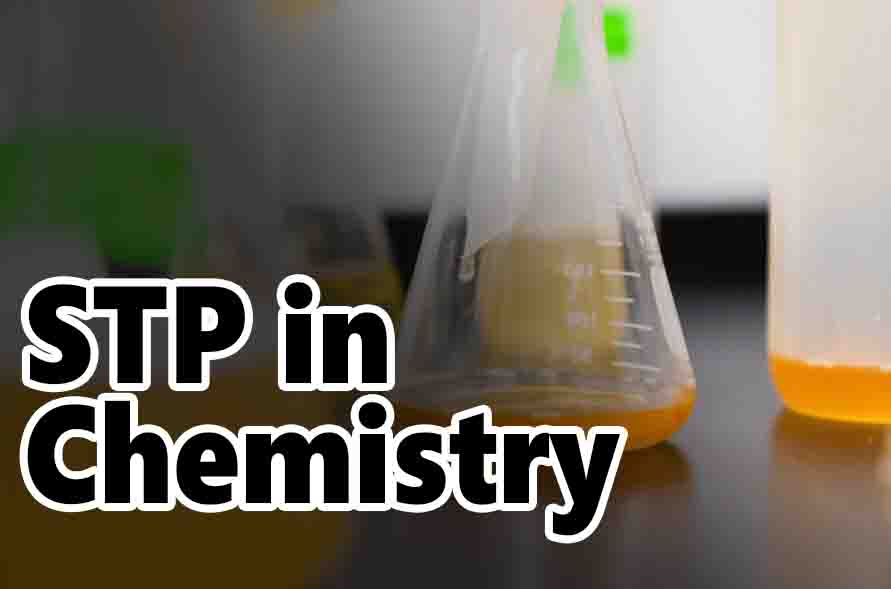CPT in chemistry is the abbreviation for the Critical Point. When performing gas calculations, STP is the best choice because it is commonly used for gas calculations. The standard temperature is 273 K (0° Celsius or 32° Fahrenheit) and the standard pressure is 1 atm pressure. The freezing point of pure water is the freezing point of water at sea level atmospheric pressure. Moles of gas occupy 22.4 liters of volume at STP.
Table of Contents
STP Definition in Chemistry
When it comes to the definition of STP, the IUPAC requires that a temperature of 273.15 K and an absolute pressure of exactly 100,000 Pa.

Key Takeaways: STP or Standard Temperature and Pressure
- STP is the abbreviation for Standard Temperature and Pressure.
- The “standard” of beauty varies from culture to culture and generation to generation.
- Temperature and pressure are the two most important parameters when measuring STP for gases.
- The common definition of STP is a temperature of 273 K (0° Celsius or 32° Fahrenheit) and the standard pressure of 1 atm.
- Under these conditions, one mole of a gas occupies 2.2 L.
- There is a standard, known as STP, that applies to the measurement of the temperature and pressure conditions in a laboratory.
Uses of STP
Standard reference conditions are very important for the expressions of fluid flow rate and volumes of fluids and gases, which are extremely dependent on temperature and pressure. When the standard condition is used for calculation, STP is commonly used. The standard state conditions that are usually recognized in calculations include standard temperature and pressure. They may be indicated by the superscript circle. For example, ΔS° refers to the change in entropy at STP.
Other Forms of STP
Because laboratory conditions rarely involve standard ambient temperature and pressure, a common standard is standard temperature and pressure or STP, which is a temperature of 2.15 K (25 °C, 77 °F) and an absolute pressure of exactly 1 atm.
ISO is a system of measurement for pressure, temperature and humidity that can help you better manage the environment in which your products are stored. It helps to ensure your products are protected from light, heat and air currents.
Standard atmospheres are used in the fields of fluid dynamics and aeronautics to specify temperature, pressure, density, and the speed of sound for a range of altitudes at the mid-latitudes. The two sets of standards are the same at all elevations, at altitudes up to 65,000 feet above sea level.
They differ somewhat in the temperature ranges that they’ll need to use at different elevations. The best standard for the F-6 model is.25 mm (which is actually the value for the M-100 series), but the F-11 is actually the best.
The International Organization for Standardization (ISO) sets their own standards, as well as the United States Environmental Protection Agency (US EPA).
Correct Use of the Term STP
Yes, it’s true! The precise definition of STP will depend on the particular standards committee that sets it. It’s always best to explicitly state the temperature and pressure reference conditions, rather than simply stating that a measurement was taken at STP.
The correct way to avoid ambiguity is to state the temperature and pressure at the standard conditions of temperature and pressure for the molar volume of a gas, rather than using “Standard Temperature and Pressure”. Calculated molar volume should be stated whether the calculation is using the ideal gas constant R or the specific gas constant Rs.
At high temperatures the gas molecules are more mobile, meaning the atoms are less bound together, which makes the gas more reactive and causes the pressure to rise. Some scientists apply STP to gases, while others try to reach saturation pressure (SATP) to make it easier to replicate their experiments, without introducing new variables. It’s important to always state the temperature and pressure of a reaction when recording it.
FAQs
An acid is a chemical that produces a sour taste, while a base is a chemical that produces a sweet taste.
Acids react with bases by producing hydrogen ions. Hydrogen ions can be neutralized by adding a strong base.
To test for acidity, you can use litmus paper. The litmus paper turns blue when it comes in contact with an acidic substance. To test for basicity, you can add a drop of phenolphthalein to a solution. Phenolphthalein turns red when it comes in contact with a basic substance.
A salt is a chemical compound that contains both a positive and negative ion. For example, sodium chloride (NaCl) is a salt because it contains one positive ion and one negative ion. A soluble salt is one that dissolves in water.
